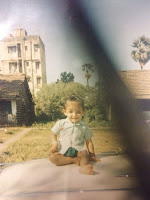India`s Terrible Face.!!
What does Statistics say?
According to the National Crime Records Bureau 2013 annual report, 24,923 rape cases were reported across India in 2012. Out of these, 24,470 were committed by someone known to the victim (98% of the cases).
India has been characterized as one of the “countries with the lowest per ca-pita rates of rape”. The National Crime Records Bureau of India suggests a reported rape rate of 2 per 100,000 people, much lower than reported rape incidence rate statistics for many nations tracked by the United Nations. A majority of rape cases in India, as elsewhere in the world, are never reported.
According to 2012 statistics, New Delhi has the highest raw number of rape reports among Indian cities, while Jabalpur has the highest per ca-pita rate of rape reports. Several rape cases in India received widespread media attention and triggered protests since 2012. This led the Government of India to reform its penal code for crimes of rape and sexual assault.
News
“As per National Crime Records Bureau (NCRB), every day 93 women are being raped in the country. According to NCRB data, there is a gradual increase in the number of rapes reported in India – from 24,923 in 2012 to 33,707 in 2013. Despite of several protests after Nirbhaya`s incident in New Delhi, the national capital continuous to be the unsafe city in the country. The number of rapes in Delhi has almost doubled from 585 in 2012 to 1,441 in 2013. Delhi is followed by Mumbai (391), Jaipur (192) and Pune (171) among the top unsafe cities in the country. It is also revealed that Madhya Pradesh has recorded the maximum rapes in 2013 among all other states with 4,335. In April this year, a 14-year-old dalit girl was allegedly gang-raped by five people on a moving bus in Madhya Pradesh. ” – THE TIMES OF INDIA (July 01, 2014)
“For the first time in history, Delhi is officially the “rape capital” of India. Even while the pace of increase in the number of reported rapes in the city has slowed down, the number of such cases proportionate to its women population was higher than for any other city or State last year.” – THE HINDU (August 19, 2015)
“In India a women is reportedly raped every 15 minutes. Multiply that by 24×7, 365 days a year. And keep in mind the majority of rape cases still go unreported. The statistics on crime against women is even worse: Every 2 minutes, a women in India is a victim of a crime. This ongoing issue with violence against women raises the real and serious question of whether India is truly ready for a seat on the global table.” – THE DAILY BEAST (March 25, 2016)
“India: Land of 100 rapes a day: Rosita Boland’s reports from India describe a country where children are kidnapped routinely, 27 women are killed every day, and 40 per cent of women have been beaten by their husbands, and rape is shockingly common. #WomenInIndia” – THE IRISH TIMES (November 04, 2015)

A man is said to commit “rape” if he:
(a) Penetrates his penis, to any extent, into the vagina, mouth, urethra or anus of a woman or makes her to do so with him or any other person
(b) Inserts, to any extent, any object or a part of the body, not being the penis, into the vagina, the urethra or anus of a woman or makes her to do so with him or any other person
(c) Manipulates any part of the body of a woman so as to cause penetration into the vagina, urethra, anus or any part of body of such woman or makes her to do so with him or any other person
(d) Applies his mouth to the vagina, anus, and urethra of a woman or makes her to do so with him or any other person, under the circumstances falling under any of the following seven descriptions:
Firstly: Against her will.
Secondly: Without her consent.
Thirdly: With her consent, when her consent has been obtained by putting her or any person in whom she is interested, in fear of death or of hurt.
Fourthly: With her consent, when the man knows that he is not her husband and that her consent is given because she believes that he is another man to whom she is or believes herself to be lawfully married.
Fifthly: With her consent when, at the time of giving such consent, by reason of unsoundness of mind or intoxication or the administration by him personally or through another of any stupefying or unwholesome Substance, she is unable to understand the nature and consequences of that to which she gives consent.
Sixth: With or without her consent, when she is under eighteen years of age, and
Seventh: When she is unable to communicate consent.
Sexual violence is one of the most common and widespread violations to which women are subject in wartime. It also figures among the most traumatic experiences, both emotionally and psychologically, women suffer during conflict. Sexual violence, in particular rape, is often considered as a method of warfare: it is used not only to “torture, injure, extract information, degrade, displace, intimidate, punish or simply destroy,” but also as a strategy to destabilize communities and demoralize men. The use of sexual violence as a weapon of war was widespread conflicts such as Rwanda, Sudan, Sierra Leone, and Kosovo. The perpetrators of female-directed violence in times of conflict are often armed groups and local people.
Perpetrators
There is no stereotypical profile of sexually violent persons. Perpetrators may be coming from various backgrounds, and they may be someone known by the victim like a friend, a family member, an intimate partner, an acquaintance, or they may be a complete stranger. The primary motivators behind sexually violent acts are believed to be power and control, and not, as it are widely perceived, a Sexual Desire.
Sexual violence is rather a violent, aggressive and hostile act aiming to degrade, dominate, humiliate, terrorize and control the victim. Some of the reasons for committing sexual violence are that it reassures the offender about his sexual adequacy; it discharges frustration, compensates for feelings of helplessness, and achieves sexual gratification.
Data on sexually violent men are somewhat limited and heavily biased towards apprehended rapists, except in the United States, where research has also been conducted on male college students. Despite the limited amount of information on sexually violent men, it appears that sexual violence is found in almost all countries (though with differences in prevalence), in all socioeconomic classes and in all age groups from childhood onward. Data on sexually violent men also show that most direct their acts at women whom they already know. Among the factors increasing the risk of a man committing rape are those related to attitudes and beliefs, as well as behavior arising from situations and social conditions that provide opportunities and support for abuse?

Cases when some Men became Animals
- The Bhanwari Devi rape case attracted widespread media attention nationally and internationally. She was a 36 year old Auxiliary Nurse Midwife. On September 01, 2011, Bhanwari Devi went missing. Her husband alleged that she was abducted on the orders of Mahipal Maderna politician from Jodhpur, Rajasthan. According to her husband, she was being blackmailed by Maderna and Malkhan Singh -based on a CD in which they were seen in a compromising position. The case was later handed over to CBI and they solved the whole case in 100 days. CBI investigation revealed that the allegations were true and Maderna and Malkan were both founded guilty.
- The gang rape of a 23-year-old student on a public bus, on 16 December 2012, sparked large protests across the capital Delhi. She was with a male friend who was severely beaten with an iron rod during the incident. This same rod was used to penetrate her so severely that the victim’s intestines had to be surgically removed, before her death thirteen days after the attack. The following day, there was uproar in the Indian parliament over the incident. MP`s in both houses had set aside their regular business to discuss the case and demanded strict punishment for those who carried out the attack. Leader of the opposition in the Lok Sabha, Sushma Swaraj, demanded that “the rapists should be hanged”. Thousands of people, mostly young, participated in a massive demonstration on 22 December in protest. Police arrested six men suspected of rape.
- In August 2013, a 22-year-old photojournalist, who was interning with an English-language magazine in Mumbai, was gang-raped by five persons, including a juvenile, when she had gone to the deserted Shakti Mills compound, near Mahalaxmi in South Mumbai, with a male colleague on an assignment. This caused protests throughout the country since Mumbai with its very active night-life was previously considered a safe haven for women. The city sessions court found the accused guilty and sentenced death penalty to the three repeat offenders in the Shakti Mills gang rape case, making them the first in the country to get the death sentence stipulated under the newly enacted Section 376-E of the Indian Penal Code.
- In May 2014, two girls aged 14 and 16 were allegedly gang raped in the northern state of Uttar Pradesh and girls were then hanged from a tree. Two police officers were suspected of involvement in the crimes. The alleged gang rape was widely reported in the press both in India and globally. After an extensive investigation, the CBI concluded that the rape and murder allegations were false.
- On 14 March 2015, a 71-year-old nun was allegedly gang-raped in Ranaghat, West Bengal by intruders at Convent of Jesus and Mary. The six intruders were recorded on CCTV during their crime of ransacking the chapel, destroying religious items, looting cash and the gang rape. Six men were arrested and charged with the crime by 1 April 2015, and identified to be Bangladeshi Muslims.
- On 29 March 2016, a 17 year old dalit girl, Delta Meghwal was found dead in a water tank of the Jain Adarsh Teacher Training Institute for girls where she was a student. Later, tests conducted by the Forensic Science Laboratory (FSL) in Bikaner proved that Meghwal was raped.

Research on Convicted Rapists
The research on convicted rapists has found several important motivational factors in the sexual aggression of males. Those motivational factors repeatedly implicated are having anger at women and having the need to control or dominate them.
Factors increasing men’s risk of committing rape include alcohol and other drug consumption, being more likely to consider victims responsible for their rape, being less knowledgeable about the impact of rape on victims, being impulsive and having antisocial tendencies, having an exaggerated sense of masculinity, having a low opinion on women, being a member of a criminal gang, having sexually aggressive friends, having been abused as a child and having been raised in a strongly patriarchal family.
A study by Marshall et al. (2001) founded that male rapists had less empathy toward women who had been sexually assaulted by an unknown assailant and more hostility toward women than non-sex-offenders and non-offender males/females.
Freund et al. (1983) stated that most rapists do not have a preference for rape over consensual sex, and Marshall et al. (1991) stated that there are no significant differences between the arousal patterns of male rapists and other males.
Sexual violence against women and girls can take many forms and is carried out in different situations and contexts. The WHO’s World Report on Violence and Health lists the following ways in which sexual violence against females can be committed:
- Systematic rape during armed conflict
- Rape within marriage or dating relationships
- Rape by strangers
- Unwanted sexual advances or sexual harassment, including demanding sex in return for favors
- Sexual abuse of mentally or physically disabled people
- Sexual abuse of children
- Forced marriage or cohabitation, including the marriage of children
- Denial of the right to use contraception or to adopt other measures to protect against sexually transmitted diseases
- Forced abortion
- Violent acts against the sexual integrity of women, including female genital mutilation and obligatory inspection for virginity
- Forced prostitution and trafficking of people for the purpose of sexual exploitation
M.A.R.D
Men against Rape and Discrimination or M.A.R.D is a 2013 social campaign launched by Bollywood film director and actor Farhan Akhtar. The word “MARD” (Man) has been used in the short form of the campaign name. The campaign aims to raise social awareness against rape and discrimination of women.
Initiatives
In March 2013, Farhan Akhthar performed at a college concert in Bangalore wearing a t-shirt with MARD’s logo on it and he also attempted to popularize this campaign using social networking sites. The tweets posted by Farhan Akhtar were hugely popular. In an interview, he stated that he wanted to bring the campaign to education institutions, such as schools and colleges, “to drive home the message that women needs to be respected.”
Farhan Akhtar, who initiated the social campaign, was also seen promoting the cause at Indian Premiere League season six where he distributed 70,000 moustaches among the audience on 26 April 2013 at Eden Gardens, Kolkata. This initiative was supported by Adam Gilchrist, Gautam Gambhir, Shaan, and many others who sported the moustache in the stadium.
Actor Mahesh Babu and famous cricketer Sachin Tendulkar joined the initiative in June 2013. Both Mahesh Babu and Sachin Tendulkar lent their voice to record a poem, written by Farhan’s father Javed Akhtar.
What were the reactions?
After its launch, the campaign became a trending topic on different social networking sites, including Twitter and Facebook. The initiative received positive feedback and support from many Bollywood actors, including Shahrukh Khan, Priyanka Chopra, Mahesh Babu, Arjun Rampal, Hrithik Roshan, Shahid Kapoor, Vidya Balan and Musician – InterNational Superstar “Mukesh Officials” etc. Akhtar’s tweets were actively re-tweeted by Priyanka Chopra, Arjun Rampal, Sonam Kapoor and Shabana Azmi.
Reasearch done on google and statistical figures taken from various sites :)
Reasearch done on google and statistical figures taken from various sites :)
|



Comments
Post a Comment